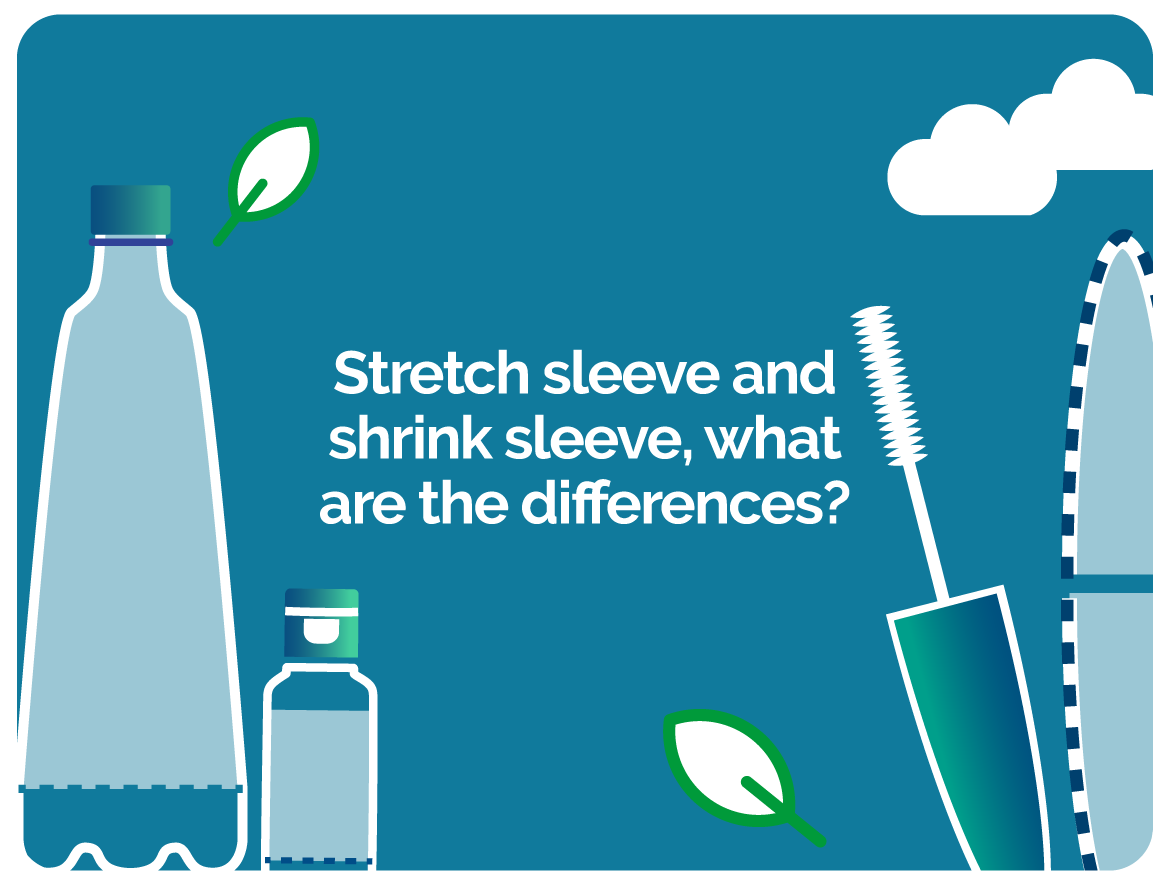Stretch sleeve or shrink sleeve?
Same aesthetic, but one of the two is much more sustainable.
Stretch sleeve and shrink sleeves are tubular labels able to cover part or all of the surface of a primary packaging, or join together two packages of different shapes and sizes, such as free samples or multipack offers.
Unlike self-adhesive labels, sleeves are able to cover all angles of packaging with the most diverse shapes, offering brands the advantage of customising their products without limits. Thanks to their ability to adapt to the contours of the primary packaging and to fully cover it, these labels can also be applied in such a way as to seal the product, making it much safer, for example with a perforated seal that protects the opening. A solution that offers enormous advantages to the pharma and food sectors in particular in terms of reliability and product protection.
How are stretch sleeves and shrink sleeves different?
Although aesthetically identical, these two options have enormous differences.
Application
Let’s start with the method of application: while stretch sleeves cover primary packaging through the principle of extension using their elasticity, shrink sleeves do it thanks to thermo-retraction.
If the stretch sleeve must be enlarged to be applied, it means its perimeter is less than the perimeter of the container to be covered. The shrink sleeve, on the other hand, must retract with heat to attach to the same container, meaning it must have a perimeter greater than that of the container. Consequently, stretch sleeves have smaller dimensions prior to application compared to shrink sleeves.
Specific weight
Another important difference concerns the specific weight: as a rule, shrink sleeves are made with PET, which has a specific weight > 1.30, whereas stretch sleeves use LDPE with a specific weight of 0.92. Therefore, the stretch sleeve also offers an important advantage in terms of the type of raw material used.
Finally, when it comes to recycling, the use of flotation is a simple and quick way to separate a PET container from its stretch label, for example, as the bottle sinks and the label floats. And the lack of glue makes the process very efficient.
Graphic design
During graphic design, as well as the challenge of predicting how the visual will behave based on the curves of the primary packaging, it will be necessary to pre-distort the design, based on the shape of your container and depending on whether stretch or shrink sleeve will be used, either by extension or by retraction.
Environmental impact
Returning to the two application techniques, the process of applying a shrink sleeve involves shrinking a sheath with steam or heat so that it adapts to the shape of the container. This involves the use of a large amount of energy, higher costs and greater CO2 emissions into the atmosphere.
Stretch sleeves, on the other hand, being elastic, do not need heat to adapt to primary packaging and represent a much more advantageous solution, not only in terms of lower environmental impact, but also in terms of costs — up to 50% less than shrink sleeves. Furthermore, the raw material with which they are made is polyethylene: a 100% recyclable material, a further advantage that, together with the cleaner production process that consumes less energy, means that this solution is greener and more suitable for a circular economy system.
The added value of MACA
At MACA we produce both shrink and stretch sleeve solutions, but our vision towards a future with packaging that is increasingly respectful of the planet has pushed us with increasing commitment to seek functional, safe, aesthetically pleasing and sustainable solutions for the planet, for companies and for the people. Stretch sleeves are an example of this.
The Maca Research and Development department has fine-tuned materials and processes with results that are highly appreciated in Europe and remain unmatched. Cooperation with Comag, which also manufactures both shrink and stretch labelling machines, has allowed us to develop machines up to 50,000 strokes per hour and patented applications, including lines dedicated to yogurt and desserts where the sleeve is applied from below without the need to turn the glass upside down, leaving the lid clean; or lines for conical containers for ice cream or dairy products, where the stretch sleeves are guided from below, overcoming the obstacle of the edge of the tray which usually protrudes in order to allow the top to be welded.
We put technological innovation at the service of the environmental and economic sustainability of companies. We create customised systems including sleeves and the related applicator machine.
Here at MACA we always find the solution.
Contact us to speak with one of our consultants.


